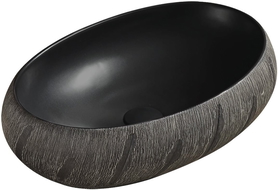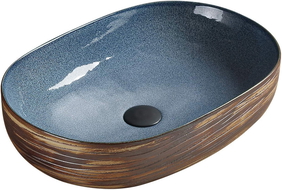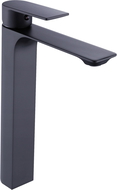
The water begins to drain very slowly, air bubbles appear in it, ghastly sounds reminiscent of gurgling emanate from the pipes, and a foul smell strikes the nostrils... This is not a horror movie scenario, but the first symptoms of a clogged sink. Is a plumber's intervention needed? Not necessarily. There are home methods for unclogging pipes. Learn some of them.
Clogged sink or washbasin - the most common causes of breakdowns
A clogged sink is the most common fault in every home. During daily use of the sink, a large amount of contaminated water flows through the pipes. It may contain food scraps, small pieces of packaging, sand, fats, coffee or tea grounds, which accumulate in the pipe, creating a blockage and effectively stopping the water from draining. In the bathroom, the most common cause of a clogged drain in the sink or bathtub is hair and soap or other cosmetic residues.
Sometimes the culprit is... limescale
In the case of long-term use of very hard water, a blocked drain can result from the accumulation of limescale. This most often happens in old sewage systems where cast iron pipes are used. Food scraps or other contaminants accumulate on limescale-covered pipes, creating a plug that is difficult to push through.
If it turns out that the sink is clogged and the water drains slower, it is worth first checking where the blockade is located - in the siphon or the drain pipe. It is much easier to deal with the former. Sometimes home chemical agents or a rubber plunger are enough. Ultimately, we may have to unscrew and clean the siphon. Worse, if the cause is a blockage in the drain pipes. Then a special spring for unclogging pipes is necessary. If this also does not help, we face an expensive visit from a plumber.
How to unclog a sink by using chemical agents at home?
The market offers many more or less effective chemical agents for unclogging sinks. The most popular are granules or gels for unclogging drains. However, when shopping, you should check whether the chosen chemical agents are suitable for our fixtures. It may happen that the offered product is not suitable for installations made of aluminum. Besides, it's worth remembering that most products contain highly corrosive substances that release toxic fumes when covered with hot water and can cause burns when in contact with skin. Therefore, you must exercise special caution when unclogging the sink.
If you are afraid of damaging the installation or are not necessarily convinced by the chemical agents purchased in the store, it's worth reaching for products available in every kitchen. Sometimes a clogged sink can be unclogged with baking soda and a glass of vinegar. Just pour half a glass of soda down the drain and pour pre-heated vinegar. Plug the drain and wait. After at least 15 minutes, turn on hot water and thoroughly rinse the sink. If you don't have vinegar, you can pour only boiling water over the soda.
Unclogging a clogged drain with a rubber plunger
Despite using available chemical agents, you couldn't remove the blockage and water still gathers in the sink. There's no choice but to use mechanical methods and unclog the sink with a plunger. A sink plunger consists of a rubber cup mounted on a rod serving as a handle. The movable cup, which acts as a suction and pressure pump, is applied to the sink or washbasin drain, and pressed down several times.
Pressure differences in the sewer pipes allow sewage to push the blockage through or 'pull' it out of the drain. For the procedure to be effective, remember to plug the overflow hole. Modern and more effective devices are plungers that resemble a syringe or gun with a rubber suction cup at the end. They work on a similar principle to traditional plungers, but are more effective and comfortable to use.
A snake spring as a rescue for a clogged drain!
The use of a rubber plunger and other home methods did not bring the desired results. The sink or washbasin is still clogged. Therefore, it's necessary to clean the siphon and possibly use a spring. Before starting to disassemble, place a container under the sink to catch the draining water, unscrew the plastic caps, clean the siphon and reinstall it. Then turn on the water and check if we have removed the cause of the clog.
If it turns out that cleaning the siphon did not help, it means that the blockage is deeper. We unscrew the siphon again and reach for a snake. It is a wire in the shape of a spring, several meters long, with a crank on one side and a sharp tip on the other. Using the crank, we screw the snake into the drain, and then, turning in the opposite direction, pull the spring out of the drain. Accumulated debris sticks to the sharp tip and gets removed to the outside. After these procedures, the washbasin or kitchen sink should be unclogged.























